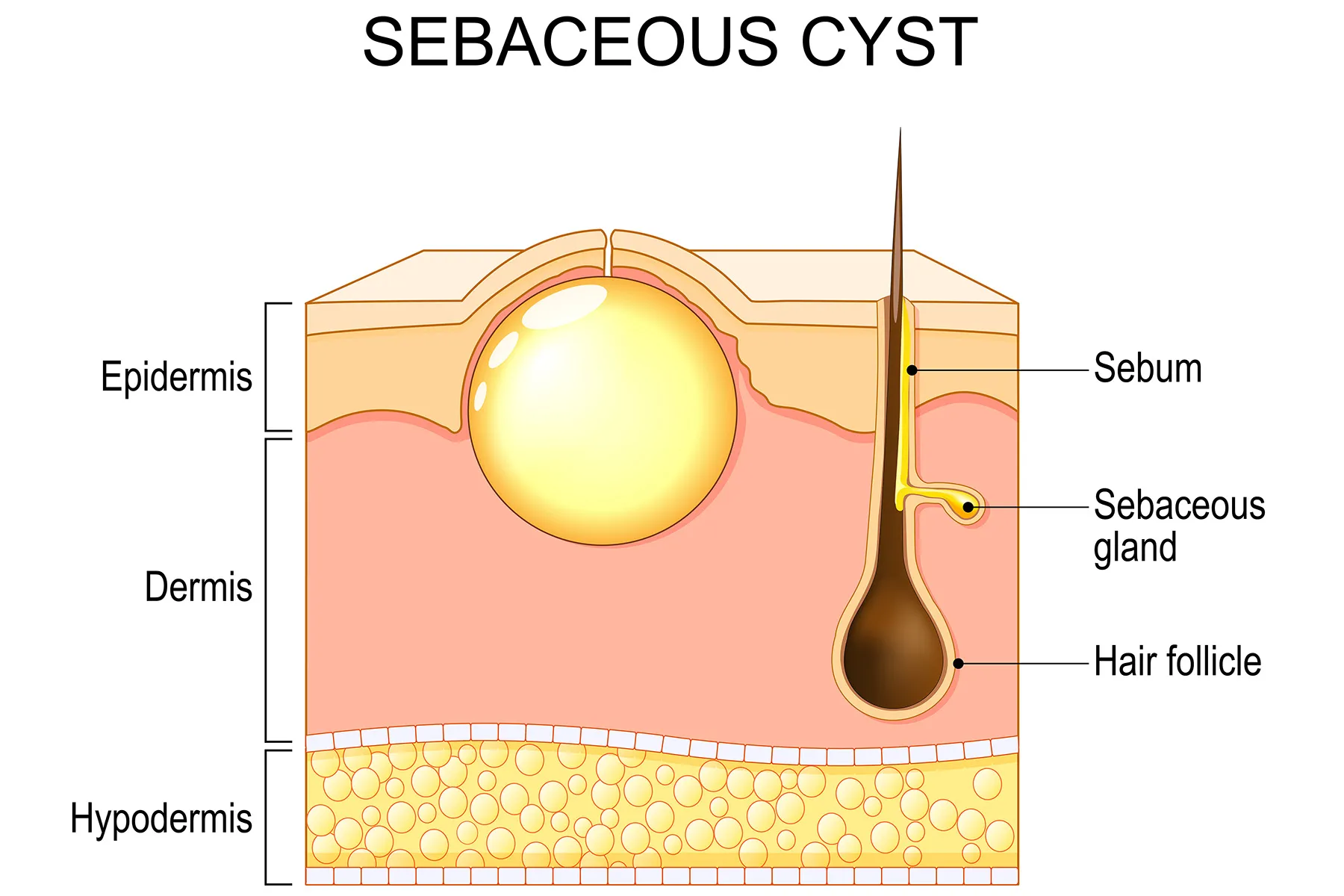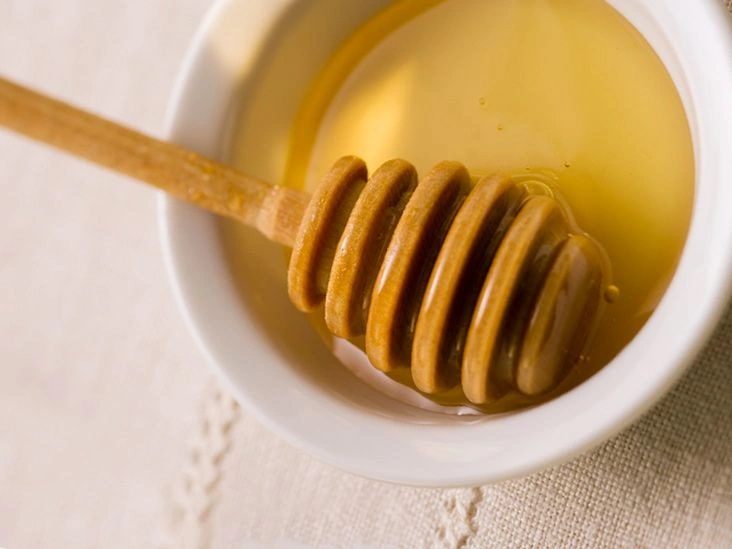A cyst is typically benign, but you should consult a physician if you want it removed. Some home approaches, like using a warm compress, can ease discomfort or lessen symptoms.

What is a cyst?
Cysts are firm or soft lumps filled with different materials that develop in the body. There are several varieties. The most frequent is an epidermoid cyst, which forms just beneath the skin.
Medical professionals or surgeons can remove this kind of cyst. That is the only reliable method to eliminate one completely.
Alternatively, you might try home treatments for an epidermoid cyst. These methods could help shrink it, make it less visible, or reduce any pain.
A precautionary note
Before we cover home remedies, a few important points should be noted:
- You should never try to excise or pop a cyst yourself. Doing so raises the risk of infection. Squeezing also doesn’t ensure the cyst will disappear permanently.
- None of the remedies outlined here are proven to fully remove cysts. However, evidence suggests they might help indirectly.
- Even if their effectiveness isn’t fully established, attempting these remedies carries minimal risk when applied properly.
Keep in mind: If a cyst is not causing problems, you may not need to have it removed.
Speak with your physician if the cyst:
- bothers you cosmetically
- becomes infected
- is painful
- grows quickly
1. Hot compress
Applying heat is the most commonly recommended and useful home approach for helping a cyst drain or get smaller.
How it works: Warmth can thin the material inside a cyst. For fluid-filled epidermoid cysts, this may enable fluid to drain more readily into the lymphatic system. The lymphatic system helps regulate fluid balance and plays a role in defense against infection.
Keep in mind
Although many clinicians and trusted sources recommend this, there are no clinical studies proving its effectiveness. There’s also limited research confirming the proposed mechanism.
Additionally, it won’t permanently remove a cyst — only a healthcare provider can do that. While this technique isn’t guaranteed to drain or diminish a cyst’s appearance, it can offer relief.
To use
- Heat clean water until warm or hot, but not boiling.
- Allow the water to cool to a tolerable yet warm temperature for skin contact.
- Soak a clean cloth in the water and press it onto the cyst for 20–30 minutes.
- Repeat several times daily.
2. Tea tree oil
Tea tree essential oil (Melaleuca alternifolia) might help some cysts, though typically in an indirect manner.
Research shows tea tree oil has antimicrobial properties. That means it can inhibit the growth of bacteria, viruses, fungi, and other microbes, though it’s not as potent as synthetic agents.
Some cysts develop from ingrown hairs. These occur when hair follicles grow improperly, causing infection of a sebaceous gland. This can create a pus-filled pocket that may evolve into a sebaceous cyst.
As an antimicrobial, tea tree oil may help address bacterial infections from ingrown hairs. It might reduce the likelihood of a cyst forming from an ingrown hair or lessen its visibility.
Keep in mind
Overall, tea tree oil is not a confirmed cyst cure. No studies demonstrate it can eradicate or prevent cysts.
Also, since not all cysts originate from ingrown hairs, tea tree oil is unlikely to benefit every cyst type — though trying it is low risk and it may help reduce size.
To use
- Dilute tea tree essential oil in clean warm water. Use about two to three drops per ounce of water.
- Apply the diluted mixture to the cyst several times daily with a clean cloth.
You can also pair tea tree oil with the hot-compress method by adding the appropriately diluted oil to the warm water.
Do not apply undiluted tea tree oil directly to the skin. It can cause irritation, burning, or discomfort. Always dilute before topical use.
3. Apple cider vinegar
Apple cider vinegar is another commonly suggested natural remedy that may offer limited benefits for cysts.
There are no studies proving apple cider vinegar reduces or eliminates cysts.
However, like tea tree oil, apple cider vinegar is believed to have antimicrobial activity when at full strength thanks to the acetic acid. It may be less effective at lower concentrations against some microbes, and it should be diluted before applying to skin.
Keep in mind
Apple cider vinegar might help certain bacterial cysts, but results are not guaranteed. It can still be worth trying since it poses few health risks when diluted.
To use
- Mix equal parts water and apple cider vinegar.
- Apply this diluted solution to the cyst several times daily.
You can combine apple cider vinegar with a warm compress by adding the vinegar in the proper dilution to the hot water.
Never apply undiluted apple cider vinegar to skin. Acetic acid can cause irritation, burning, or discomfort.
4. Aloe vera
Research indicates aloe vera has anti-inflammatory and antimicrobial effects. These properties may help relieve pain and irritation associated with cysts.
Aloe vera might also help reduce the appearance of or assist in resolving some cysts caused by bacterial or other microbial factors.
Keep in mind
Studies haven’t shown aloe vera to reliably remove, drain, or shrink cysts. It could, however, be useful for easing discomfort and inflammation; more research is needed.
To use
Follow product directions and apply a pure aloe gel, cream, or lotion directly to an irritated or sore cyst as needed.
Purchase aloe products from reputable manufacturers. Check ingredient lists to confirm you’re getting genuine aloe.
5. Castor oil
Castor oil (from Ricinus communis) may assist with cysts in a similar way to apple cider vinegar or tea tree oil.
Research suggests castor oil has antimicrobial action, particularly effective against skin bacteria that can cause acne and some cysts.
Keep in mind
Castor oil is not a proven cure for cysts and has not been shown to consistently reduce their visibility.
It’s also unlikely to help every cyst; it may only affect those stemming from bacterial causes, and even then there’s no assurance of benefit.
To use
Choose a 100 percent pure castor oil product from a trustworthy brand.
- Place one drop of castor oil on your finger and rub it onto the cyst.
- Add more as needed; using it a few times a day is typical.
Do not ingest castor oil if pregnant or allergic. Oral use can cause diarrhea.
6. Witch hazel
Witch hazel is commonly used as a topical cleanser for acne. Research indicates it may aid acne through its astringent and anti-inflammatory actions.
These traits may also be beneficial for epidermoid cysts. Witch hazel’s tannins could help contract tissue and reduce size, while its anti-inflammatory effects might relieve pain.
Keep in mind
There are no direct studies proving witch hazel treats cysts. It’s unlikely to remove them but may provide symptomatic relief.
To use
- Soak a cotton ball with witch hazel.
- Apply it to the cyst area.
- Repeat several times daily or as desired.
People with sensitive skin can react to witch hazel; diluting it with water can reduce this risk.
7. Honey
Some people suggest honey for cyst care, though direct research is limited. Reviews of studies indicate honey shows antimicrobial and anti-inflammatory effects.
Keep in mind
There isn’t enough evidence to label honey a cyst cure. Applying it may help with discomfort and with cysts that have a bacterial origin.
To use
One option is to make a poultice by blending raw, unprocessed honey with other antimicrobial herbs or ingredients, applying it to the cyst, and leaving it on overnight.
A simpler method:
- Place a small amount of pure honey on the cyst.
- Leave it for several hours; longer contact may improve effects.
- Wash it off and reapply as desired.
8. Turmeric
Turmeric won’t eliminate a cyst on its own, but the spice has well-known anti-inflammatory properties that may aid healing.
Keep in mind
Turmeric is not a cyst cure. There’s no assurance it’ll reduce swelling, and it may not help certain cyst types.
To use
Ideally use fresh turmeric powder.
- Mix turmeric with water to form a paste.
- Apply the paste to the cyst as needed.
Caution: Turmeric can cause skin reactions in some people. Test it on a small patch of skin before using it on the cyst.
Can you prevent a cyst from forming?
You can’t always stop a cyst from developing, but you can reduce the risk of infection.
The best precautions include avoiding:
- squeezing it
- popping it
- prodding it with objects
- cutting it open
Frequently asked questions
How can I remove my cyst naturally?
Do not attempt to remove or pop a cyst yourself. This increases infection risk and popping won’t ensure it won’t return. While home remedies might shrink a cyst, you generally cannot eliminate one at home.
How can I shrink a cyst at home?
There are home approaches you can try to reduce a cyst’s size. No method guarantees reduction, but they are unlikely to harm you. These include:
- hot compress
- tea tree oil
- apple cider vinegar
- aloe vera
- castor oil
- witch hazel
- honey
- turmeric
What can I use to dissolve a cyst?
Although there’s no proof home remedies reliably dissolve cysts, these options may help depending on the cyst’s type and size:
- hot compress
- tea tree oil
- apple cider vinegar
- aloe vera
- castor oil
- witch hazel
- honey
- turmeric
What is the fastest way to get rid of a cyst?
Seeing a healthcare provider is the quickest way to remove a cyst. Depending on its type and size, a doctor may lance and drain it, inject medication, or surgically excise it.
Takeaway
Certain home remedies can assist with aspects of cyst care or help specific types. Warm compresses are the most frequently advised by reliable sources.
Before trying topical natural treatments, perform a patch test: apply a small amount to your forearm and wait 24 hours to check for an allergic reaction. Although uncommon, reactions can occur.
If a home remedy causes irritation, pain, or unusual effects, stop using it and consult your physician about treatment options.
Remember: the only definitive way to remove a cyst is through a healthcare professional.


















Leave a Reply
You must be logged in to post a comment.